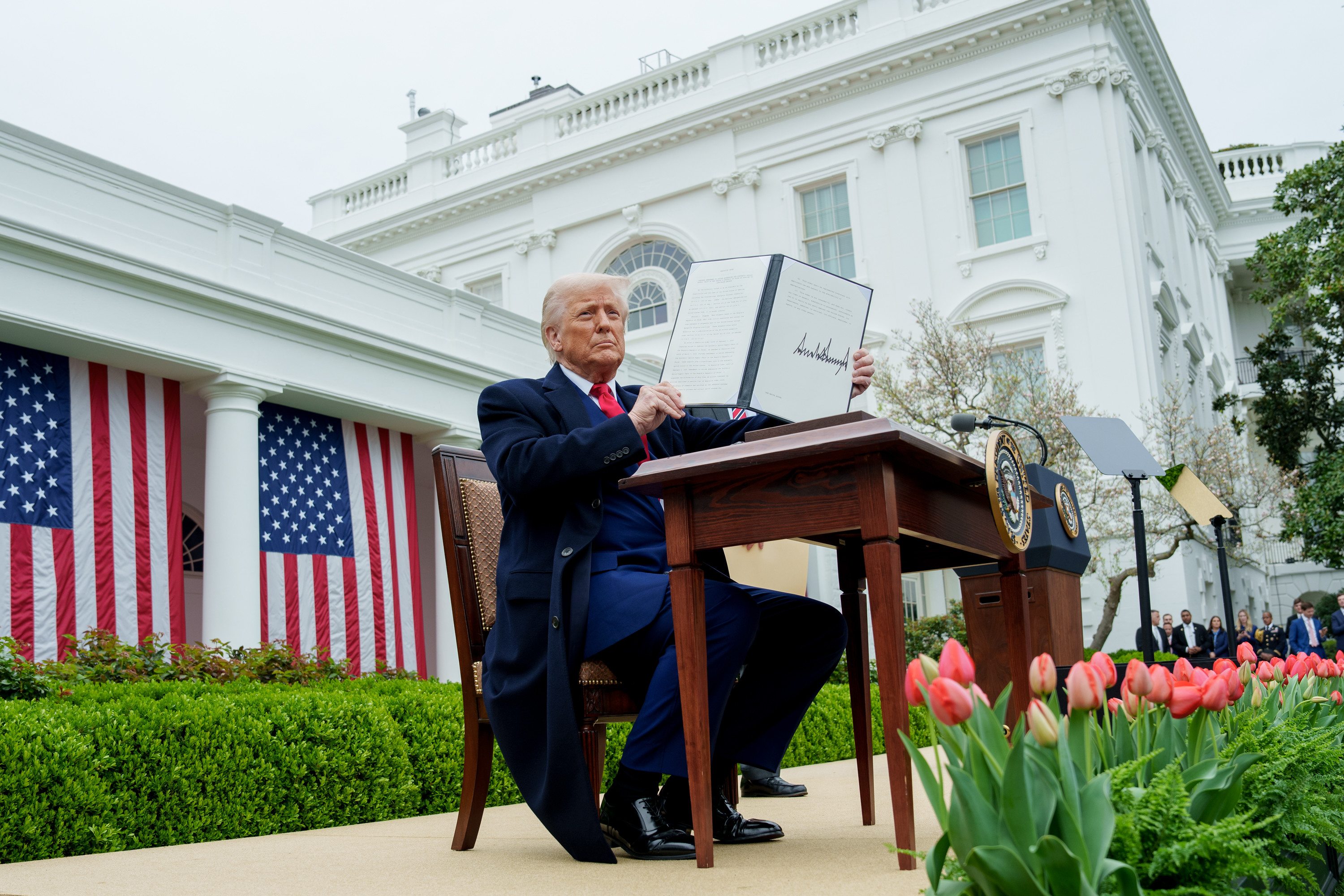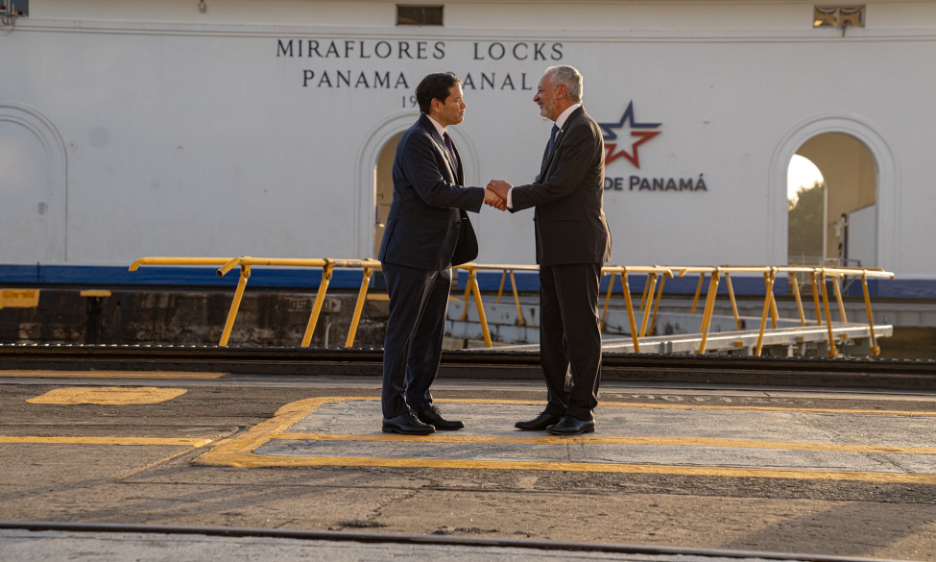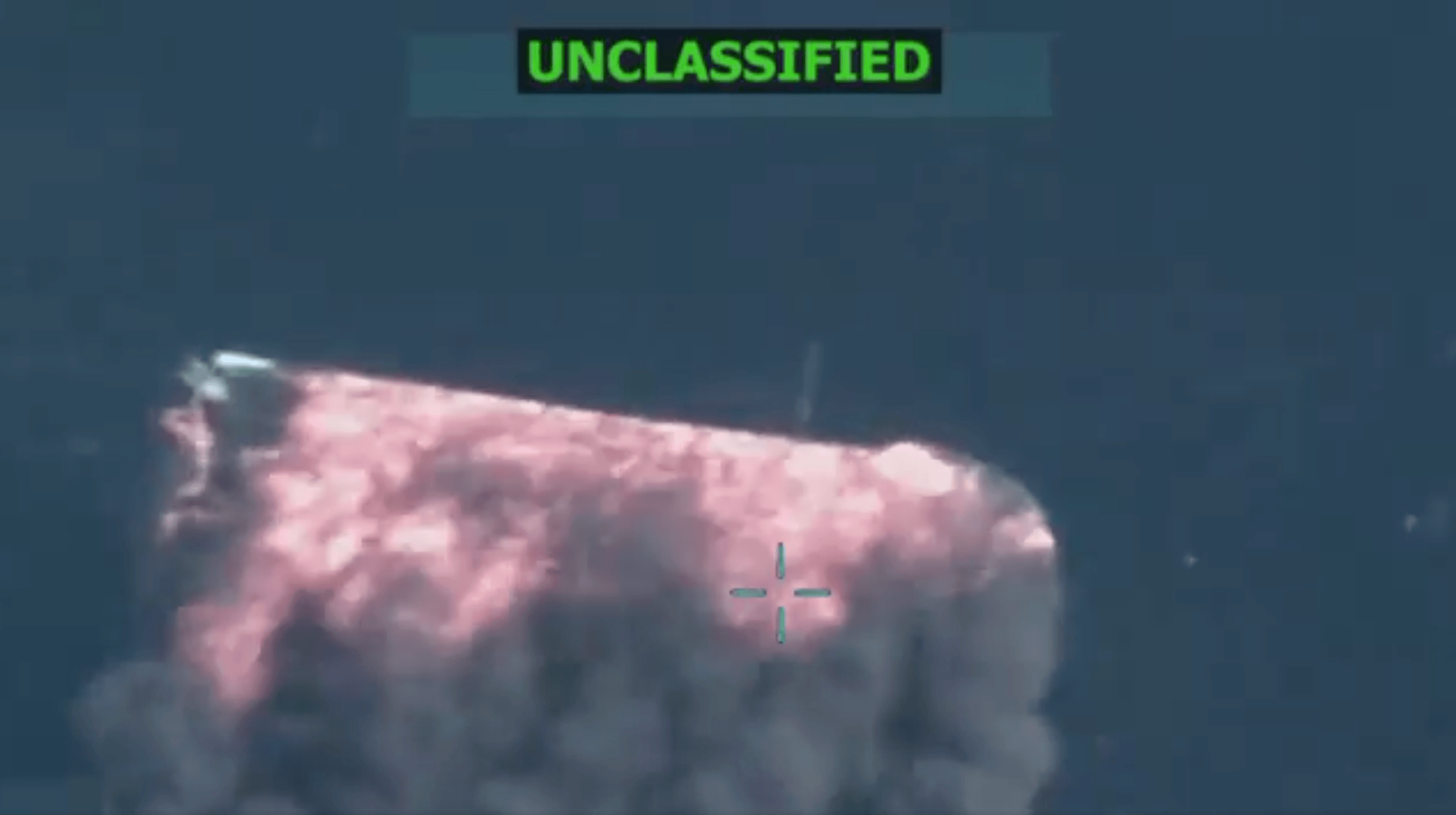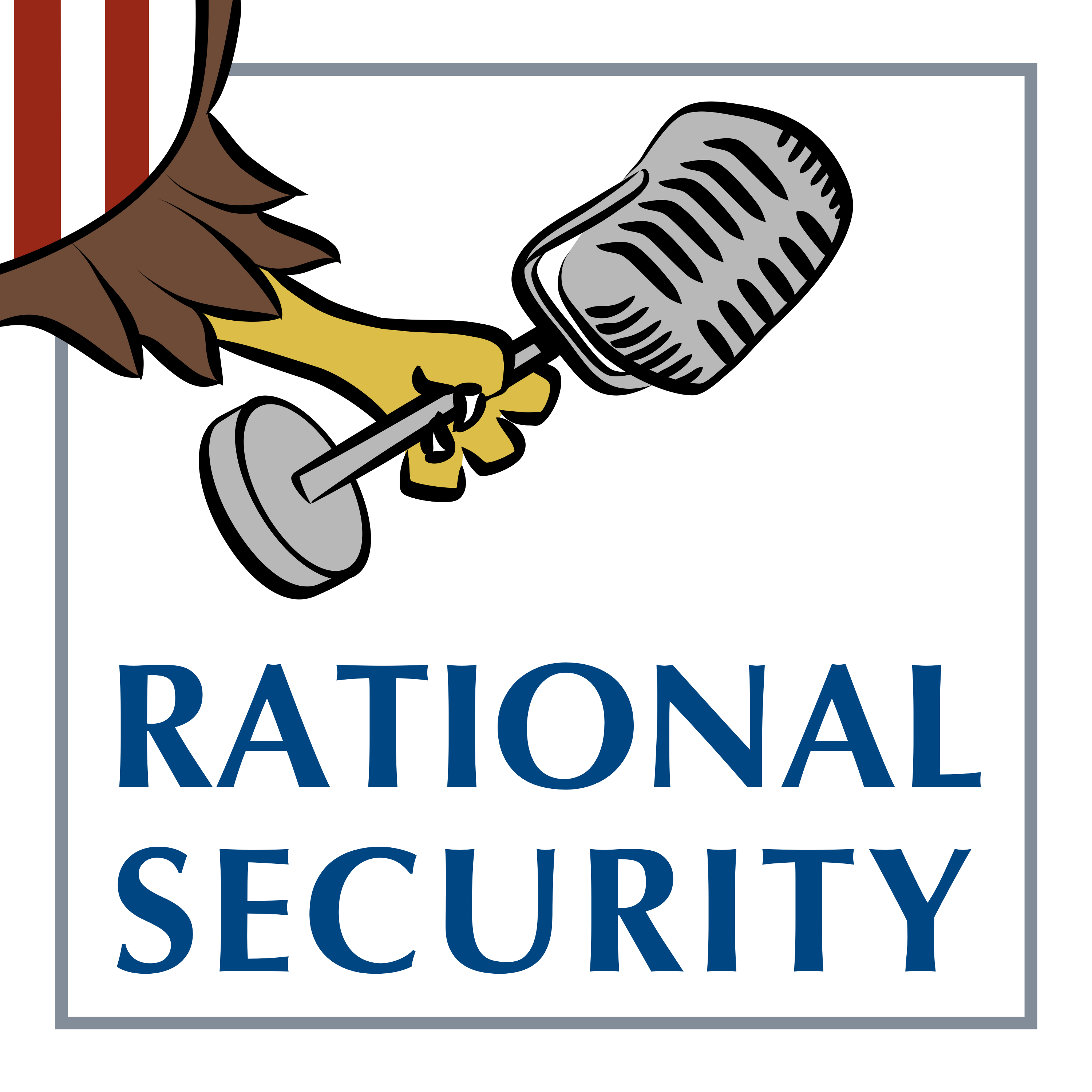The IEEPA Tariffs Are Based on Pretext

Published by The Lawfare Institute
in Cooperation With

Editor’s note: This is a modified excerpt from “This Is (NOT) an Emergency: On the Trump Tariffs and Emergency Powers,” 64 Colum. J. Transnat'l L. (forthcoming Dec. 2025).
On April 2, President Trump declared that the U.S. trade deficit in goods was a national emergency and raised tariffs to the highest level in 100 years to address it. Three courts have now ruled that those tariffs are illegal, and an appeal by the government will soon be heard by the Supreme Court. As I write elsewhere, the decisions striking down the tariffs are persuasive and should be upheld. But each also ignores a key question: whether the U.S. trade deficit constitutes an “unusual and extraordinary threat” that justifies emergency measures in the first place.
The reticence to answer that question is understandable: There is a long history of courts deferring to the executive on the declaration of emergencies and with respect to foreign affairs, including under the International Emergency Economic Powers Act (IEEPA)—the statute that President Trump invoked to order the tariffs. But it is also unfortunate, because the Trump tariffs are predicated on a transparently pretextual emergency and as such present an ideal case for drawing some sorely needed boundaries around IEEPA powers.
As I elaborate below, the U.S.’s trade deficit in goods is a broad, chronic, foreseeable, and foreseen trade-off of 80 years of U.S. trade strategy. Identifying it as an “unusual and extraordinary threat” is a transparent attempt to reverse that strategy and “eviscerate[]” the laws that establish it. It begs disbelief that Congress intended IEEPA to be used this way. The Supreme Court should make clear that it did not.
Defining an “Unusual and Extraordinary Threat”
IEEPA authorizes the president to “deal with any unusual and extraordinary threat, which has its source in whole or substantial part outside the United States, to the national security, foreign policy, or economy of the United States.” Courts have concluded the “unusual and extraordinary threat” condition “meaningfully constrains” the president’s discretion. Yet they have provided few clues as to how it does so.
The Trump Liberation Day tariffs, and the supposed threats upon which they are predicated, reveal four features that betray the government’s claim that they fulfill that statutory condition. As laid out below, those features establish that the threats Trump identified are usual and ordinary, and that they should be dealt with through the usual and ordinary non-emergency statutes and procedures that exist to address them.
The Threat Is Overly Broad and Poorly Defined
First, the threat Trump identified—the U.S. trade deficit in goods, and its causes and consequences—is breathtakingly expansive and ill-defined. The trade deficit means the U.S. imports more (in dollar terms) than it exports. In 2023, the U.S. imported over $3.2 trillion worth of goods (about 10.7 percent of GDP) and exported over 2 trillion (about 6.7 percent of GDP). The threat identified by Trump, in other words, implicates at least $1.2 trillion in commerce and 4 percent of the U.S. economy. The causes and consequences of the deficit Trump cited are likewise expansive (and at the same time misleading and incomplete). The causes Trump identifies—“a lack of reciprocity in our bilateral trade relationships, disparate tariff rates and non-tariff barriers, and U.S. trading partners’ economic policies that suppress domestic wages and consumption”—implicate the trade and economic policies of virtually every other country on Earth. The identified consequences of the deficit—namely, the “hollowing out of our manufacturing base”—likewise implicate the U.S.’s entire $2.3 trillion manufacturing sector (10.2 percent of total GDP). The supposed threat upon which the Liberation Day tariffs are predicated is extraordinarily broad.
It is also ill-defined. In announcing the tariffs, Trump made clear he believes the trade deficit represents a “subsidy” from the U.S. to other countries because the U.S. is paying more money to other countries than they are paying us. That mistakenly (or perhaps deliberately) ignores the other side of the ledger: Other countries are sending goods and services to the U.S. as part of that exchange. Trump’s view of trade deficits is particularly misguided when it comes to the U.S., which controls the world’s reserve currency. The U.S.’s trade deficit means it is receiving actual goods and services in exchange for sending pieces of paper or IOUs it prints and produces at-will.
It is true that trade deficits with respect to certain countries and goods may have national security implications. For example, as the U.S.-China rivalry heats up, the U.S.’s reliance on China for critical goods—such as rare earth minerals—could give China leverage over the U.S. and thus plausibly pose a national security threat. (Indeed, China is now using this exact leverage in negotiations with the Trump administration in a deal that would ostensibly redefine the U.S.-China trading relationship.) Tariffs could arguably—though not ideally—encourage domestic production of these and other critical goods over the long run. But the IEEPA tariffs make no distinction between friend and foe or critical and non-critical goods. Nor do they make the even more basic distinctions between manufactured goods and non-manufactured goods, between high-value goods or low-value goods, or even between goods the U.S. can produce at home and those that it cannot. The Liberation Day tariffs apply as equally to socks as they do to samarium (a critical mineral for magnets); as equally to papayas as they do to penicillin; and even more harshly to Switzerland than to China.
The sweeping and arbitrary nature of the tariffs is not a coincidence. It is the consequence of having so poorly and broadly defined the threat the tariffs are meant to address. That is relevant to the analysis of “unusual and extraordinary”: The broader and less-defined the threat, the more likely it is to be pretextual and abused to justify broad and arbitrary action—as is the case here.
The Threat Is Chronic and Long Term
Second, the U.S. trade deficit—to the extent it is a threat at all—is a chronic and long-term one; or as the title of the Liberation Day executive order states, a “persistent” one. The U.S. has been running an overall trade deficit since the 1970s and a trade deficit in goods since at least then. The same is true with respect to the U.S.’s decline in manufacturing—which Trump attributes to the trade deficit. The U.S. has been experiencing a decline in the manufacturing sector as a share of GDP since at least the 1950s, and it has stabilized, not worsened, in recent years.
The chronic and long-term nature of these supposed threats should also matter to the analysis of “unusual and extraordinary.” “Unusual,” after all, describes something that is “rare” and “uncommon.” “Extraordinary” means “exceptional to a very marked extent.” A chronic, decades-long condition can hardly be described as either.
Nor are emergency authorities suitable for such conditions. Chronic and long-term problems leave plenty of time for normal legislative and administrative channels. Moreover, as the Trump tariffs demonstrate, such problems will often be meaningfully addressable only through such normal channels. Strengthening the U.S. manufacturing base, particularly in high-value and critical sectors, requires large long-term investments in factories, robots, and worker training. Trump has promised the tariffs would bring in trillions of dollars’ worth of investments. But investments predicated on tariffs require some certainty as to those tariffs’ continued existence. Emergency measures that are reversible by the next administration—or at any moment by Trump himself—cannot provide such certainty, and are inappropriate means for addressing long-term chronic problems. IEEPA’s requirement that a threat be “unusual and extraordinary” should preclude presidents from trying to use the statute in that fashion.
The Threat Is the Foreseeable Consequence of Deliberate Policy
Third, the threats predicating the Liberation Day tariffs are not just chronic and long term; they are also the foreseeable trade-offs of a trade policy Congress and previous presidents pursued deliberately.
Trump’s attacks on trade make it easy to forget that the U.S. wrote the rules of the global economy for its own benefit. In the wake of World War II, the U.S. led the creation of the General Agreement on Tariffs and Trade (GATT) to liberalize trade among the U.S. and its allies and to agree to mutual reductions of tariffs and non-tariff barriers to trade. Following the fall of the Soviet Union, the U.S. led the creation of the World Trade Organization to bring nearly every other country into the trading club. Outside of multilateral agreements, the U.S. has also sought bilateral and regional agreements pursuing even deeper trade relations. These agreements have been enshrined into U.S. domestic law and led to significant reductions in tariffs worldwide, from between around 20 and 40 percent during the 1940s to less than 3 percent in 2017.
Several aims motivated the U.S.’s strategy, including the promotion of economic growth and geopolitical alliances. But just as importantly, U.S. policymakers believed economic isolationism created the conditions for World War II, and that preventing another cataclysm required using trade to create greater economic interdependence and shared prosperity.
Measured against these goals, the U.S.’s strategy has been wildly successful. Despite its current crisis of confidence, the U.S. remains the world’s preeminent economic, technological, and military superpower. It is backed by the world’s most powerful military alliances critically buttressed by close trading relationships (at least until recently). And the world experienced an unprecedented run of peace and prosperity.
But as with all strategies, the U.S.’s trade strategy has had its trade-offs. One of those trade-offs is that to obtain buy-in from other countries, the U.S. has not always demanded the same exact trade concessions from its trading partners as it promises them. Trump calls this a “lack of reciprocity” and cites it as one of the underlying causes of the trade deficit constituting the supposed emergency.
But reciprocity in global trade negotiations has never been understood as requiring each party make identical concessions, adopt identical tariffs, or implement identical tax and regulatory schemes.
Instead, reciprocity has meant different countries present different packages of tariff reductions based on their respective commercial, political, and strategic interests. Individual tariff lines, and even overall weighted tariff averages, are not necessarily equal across nations, but overall packages of reductions are mutually agreed upon. Moreover, internal taxation and regulatory policies have been left to the discretion of individual members, subject to the requirement that they not discriminate against or among foreign imports. Trump is now unhappy with the compromises the U.S. has made in previous negotiations (including one he led). But the U.S. agreed to those compromises, in forums it created, pursuant to rules it established. The results can hardly be understood as constituting an “unusual or extraordinary” threat.
The same is true for the U.S.’s trade deficit and what Trump has referred to as “the hollowing out of our manufacturing base.” The loss of goods manufacturing and the resulting goods trade deficit was to be expected in a global economy in which the U.S.’s comparative advantage is innovation and services. Indeed, the U.S. runs a trade surplus in services.
The trade deficit is also the result of other deliberate policy goals, including the U.S. dollar’s status as the world’s reserve currency and the enviable strength of the U.S. economy. The dollar’s status confers enormous and unparalleled power upon the U.S. in terms of borrowing and sanctioning—an “exorbitant privilege” that presidents (including Trump) have rightly sought to protect. But as with all things, including a highly efficient services economy, it has trade-offs. By creating additional demand for the dollar, the dollar’s reserve status pushes its value up, thus making imports cheaper and exports to other countries more expensive. The exceptional strength of the U.S. economy acts in similar ways, drawing capital from foreign investors and thus further increasing demand for and the value of the U.S. dollar. As economists have pointed out, the trade deficit is also a capital surplus.
Over the past 80 years, the U.S. has accepted those trade-offs as necessary for achieving its larger strategic goals of economic growth and security. Goods manufacturing declined, but services and innovation grew. U.S. imports exceeded exports, but Americans were able to consume more than they produce. The U.S. ran a trade deficit but attracted foreign capital. Regardless of what one thinks of these bargains, the trade-offs were natural, anticipated, and ongoing for decades. They are the opposite of “unusual and extraordinary.”
Congress Foresaw and Addressed the Threat Elsewhere
Finally, not only were the trade-offs of this policy foreseeable, but Congress actually foresaw them and specifically addressed them through other statutes. While authorizing the president to enter international agreements that mutually reduce tariffs as part of its grand economic and geopolitical strategy, Congress also authorized the president to raise tariffs in response to certain specific conditions. Different provisions of the Trade Act of 1974, the Trade Expansion Act of 1962, and the Tariff Act of 1930 authorize the executive to raise tariffs in response to the various putative threats identified in the Liberation Day executive order: balance of payments problems, unfair and illegal trade practices, discriminatory practices, unexpected surges in imports that threaten domestic industry, and national security threats.
The very fact that Congress foresaw these threats and enacted legislation that specifically addresses them further demonstrates they are not “unusual and extraordinary” (“rare” and “exceptional”) or an “emergency” (“unforeseen … circumstances … calling for immediate action”).
The Court of International Trade (CIT) used similar reasoning to conclude that Section 122 of the Trade Act of 1974 “removes the President’s power to impose remedies in response to ... trade deficits” from IEEPA. Quoting United States v. Yoshida Int’l Inc. approvingly, it reasoned “Congress has said what may be done with respect to foreseeable events in the ... Trade Act of 1974 ... and has said what may be done with respect to unforeseeable events in [IEEPA’s predecessor statute].” But the CIT based its conclusion on an intuitive division of labor and the specific legislative history of Section 122, refusing expressly to analyze the “unusual and extraordinary” condition. That is defensible, but needlessly complicated. There is better, more direct support for the same conclusion in the text of the statute. As I write elsewhere, the most obvious function of the “unusual and extraordinary” condition is to prevent IEEPA from eviscerating other non-emergency statutes—as the Liberation Day tariffs would do here.
The Dissenting Opinion in V.O.S. Selections
The dissenting opinion issued from the U.S. Court of Appeals for the Federal Circuit in V.O.S Selections argues that this all misses the point, that the “unusual and extraordinary threat” is not actually the trade deficit in goods generally—as the title of Trump’s executive order states. Rather, the order “targets the ‘unusual and extraordinary threat’ of particular goods trade deficits” (emphasis added).
The dissent’s description cannot reasonably be squared with either the order’s title or its content. It is true that the order recites, in passing, broad categories of goods—like “military stockpiles,” “food,” and “manufactured products.” But the threat described within the order’s title and text is the U.S. trade deficit in goods generally. More to the point, the tariffs imposed by the order do not distinguish between the supposed “targeted” products and others not “targeted.” They apply to virtually every import, from virtually every country on Earth.
Rather than rescuing the Liberation Day tariffs then, the dissent’s reasoning presents an alternative reason to strike them down. If the threat is not the trade deficit in goods generally—but rather a trade deficit in particular goods—then the across-the-board tariffs imposed by that order are overly broad and run afoul of IEEPA’s condition that its powers “only be exercised to deal with an unusual and extraordinary threat” (emphasis added).
Ultimately, however, that alternative argument is unnecessary, because the dissent’s reading of the order is not supportable. The Trump administration defined the threat as the U.S. trade deficit in goods in general, because it needed an expansive threat to justify its sweeping and unprecedented tariffs. The order should fail on those grounds alone. The broad, chronic, foreseeable, and foreseen trade-off of the country’s postwar trade strategy is not an “unusual and extraordinary threat.” It is a pretext for reversing that strategy and eviscerating the laws that establish it.





